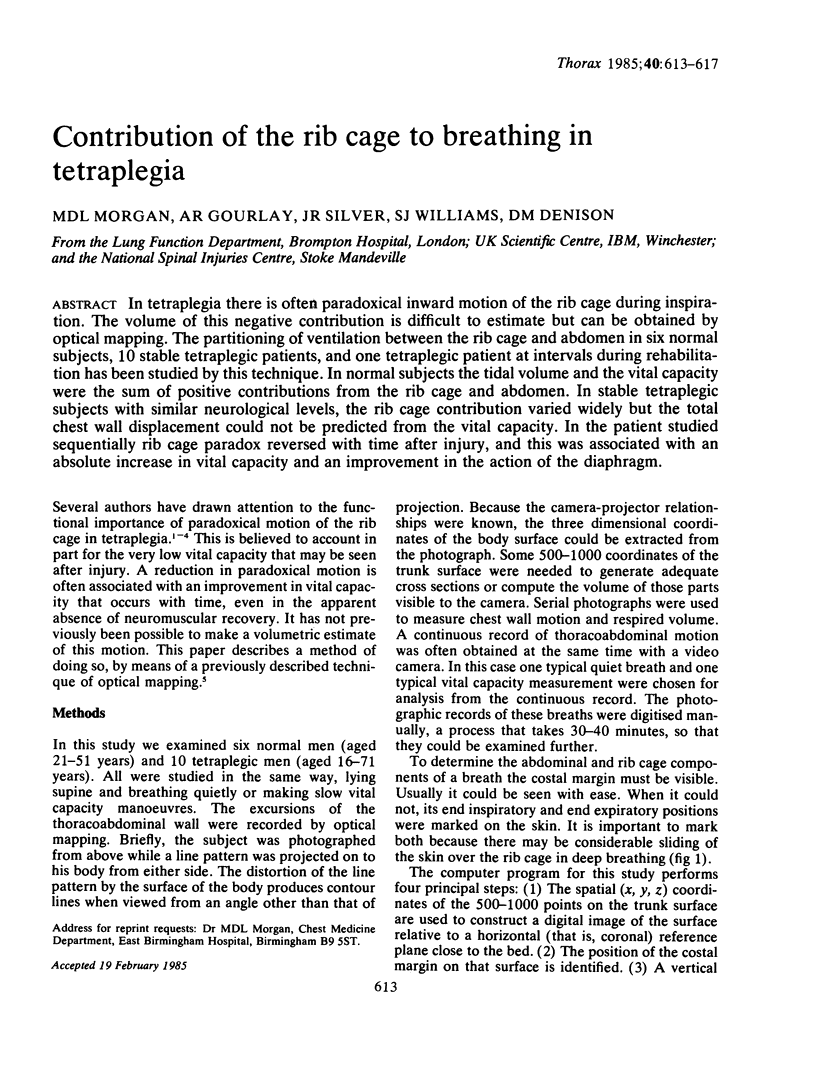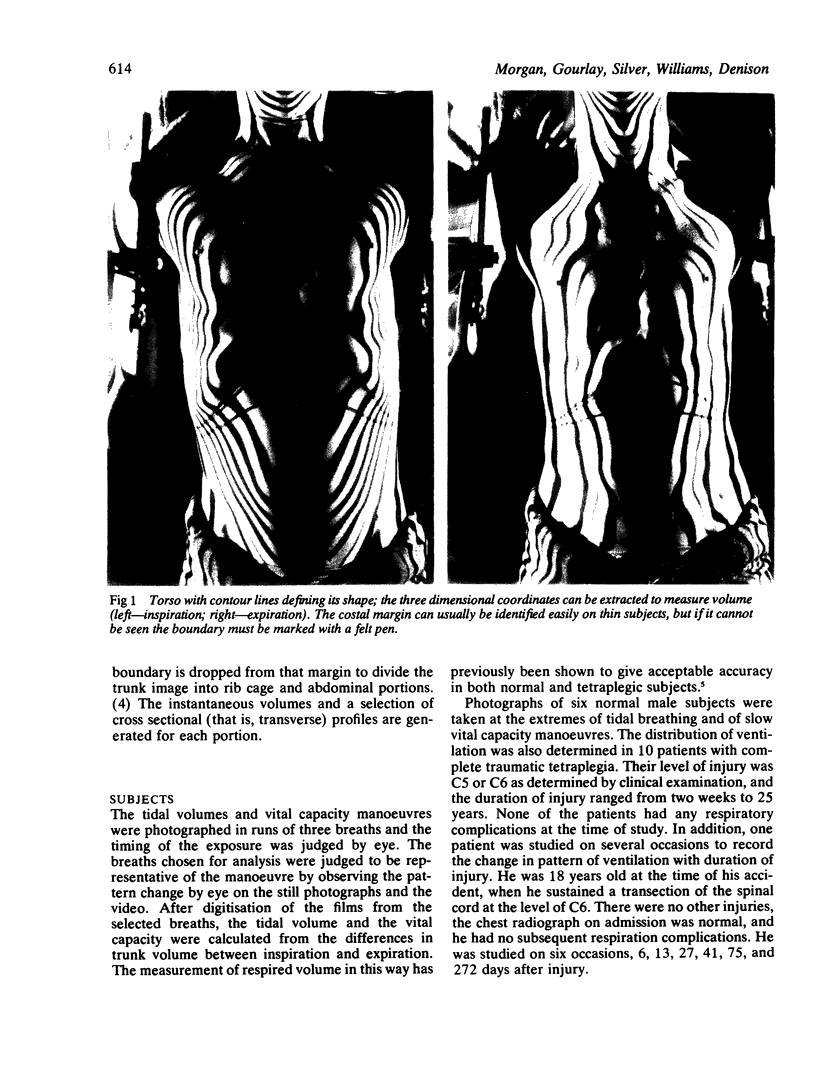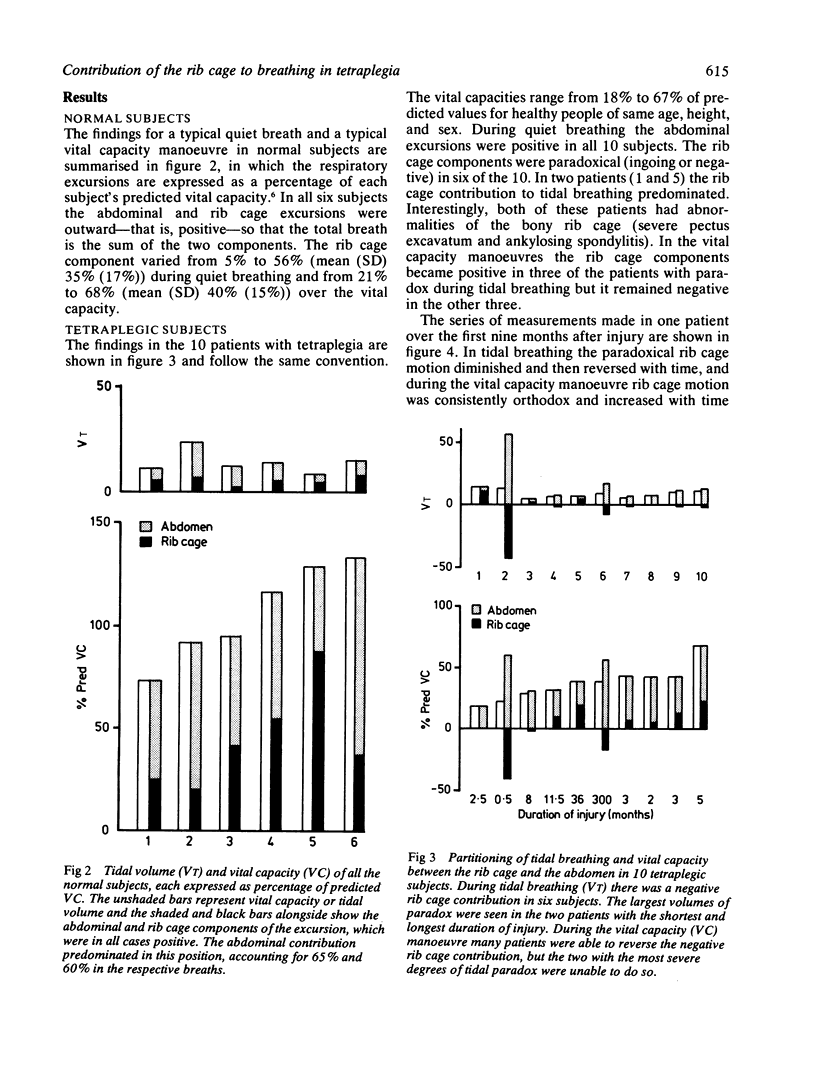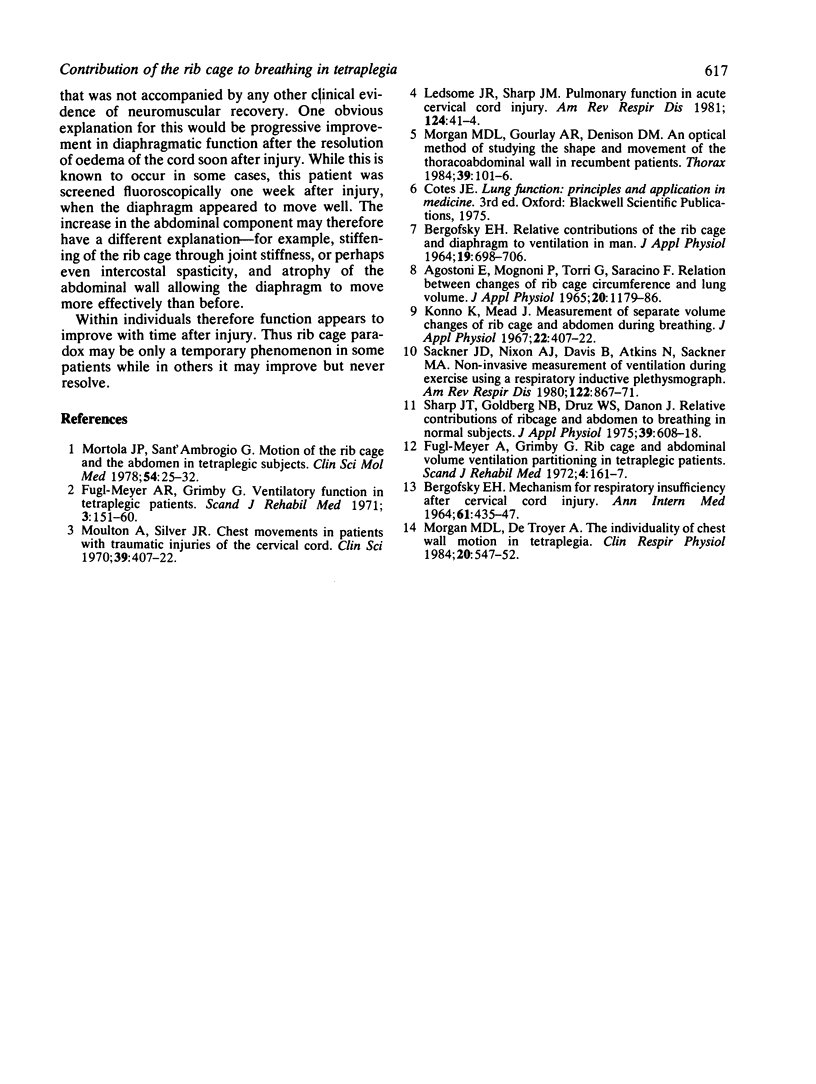Abstract
In tetraplegia there is often paradoxical inward motion of the rib cage during inspiration. The volume of this negative contribution is difficult to estimate but can be obtained by optical mapping. The partitioning of ventilation between the rib cage and abdomen in six normal subjects, 10 stable tetraplegic patients, and one tetraplegic patient at intervals during rehabilitation has been studied by this technique. In normal subjects the tidal volume and the vital capacity were the sum of positive contributions from the rib cage and abdomen. In stable tetraplegic subjects with similar neurological levels, the rib cage contribution varied widely but the total chest wall displacement could not be predicted from the vital capacity. In the patient studied sequentially rib cage paradox reversed with time after injury, and this was associated with an absolute increase in vital capacity and an improvement in the action of the diaphragm.
Full text
PDF




Images in this article
Selected References
These references are in PubMed. This may not be the complete list of references from this article.
- BERGOFSKY E. H. MECHANISM FOR RESPIRATORY INSUFFICIENCY AFTER CERVICAL CORD INJURY; A SOURCE OF ALVEOLAR HYPOVENTILATION. Ann Intern Med. 1964 Sep;61:435–447. doi: 10.7326/0003-4819-61-3-435. [DOI] [PubMed] [Google Scholar]
- BERGOFSKY E. H. RELATIVE CONTRIBUTIONS OF THE RIB CAGE AND THE DIAPHRAGM TO VENTILATION IN MAN. J Appl Physiol. 1964 Jul;19:698–706. doi: 10.1152/jappl.1964.19.4.698. [DOI] [PubMed] [Google Scholar]
- Fugl-Meyer A. R., Grimby G. Ventilatory function in tetraplegic patients. Scand J Rehabil Med. 1971;3(4):151–160. [PubMed] [Google Scholar]
- Konno K., Mead J. Measurement of the separate volume changes of rib cage and abdomen during breathing. J Appl Physiol. 1967 Mar;22(3):407–422. doi: 10.1152/jappl.1967.22.3.407. [DOI] [PubMed] [Google Scholar]
- Ledsome J. R., Sharp J. M. Pulmonary function in acute cervical cord injury. Am Rev Respir Dis. 1981 Jul;124(1):41–44. doi: 10.1164/arrd.1981.124.1.41. [DOI] [PubMed] [Google Scholar]
- Morgan M. D., De Troyer A. The individuality of chest wall motion in tetraplegia. Bull Eur Physiopathol Respir. 1984 Nov-Dec;20(6):547–552. [PubMed] [Google Scholar]
- Morgan M. D., Gourlay A. R., Denison D. M. An optical method of studying the shape and movement of the chest wall in recumbent patients. Thorax. 1984 Feb;39(2):101–106. doi: 10.1136/thx.39.2.101. [DOI] [PMC free article] [PubMed] [Google Scholar]
- Mortola J. P., Sant'Ambrogio G. Motion of the rib cage and the abdomen in tetraplegic patients. Clin Sci Mol Med. 1978 Jan;54(1):25–32. doi: 10.1042/cs0540025. [DOI] [PubMed] [Google Scholar]
- Moulton A., Silver J. R. Chest movements in patients with traumatic injuries of the cervical cord. Clin Sci. 1970 Sep;39(3):407–422. doi: 10.1042/cs0390407. [DOI] [PubMed] [Google Scholar]
- Sackner J. D., Nixon A. J., Davis B., Atkins N., Sackner M. A. Non-invasive measurement of ventilation during exercise using a respiratory inductive plethysmograph. I. Am Rev Respir Dis. 1980 Dec;122(6):867–871. doi: 10.1164/arrd.1980.122.6.867. [DOI] [PubMed] [Google Scholar]
- Sharp J. T., Goldberg N. B., Druz W. S., Danon J. Relative contributions of rib cage and abdomen to breathing in normal subjects. J Appl Physiol. 1975 Oct;39(4):608–618. doi: 10.1152/jappl.1975.39.4.608. [DOI] [PubMed] [Google Scholar]



